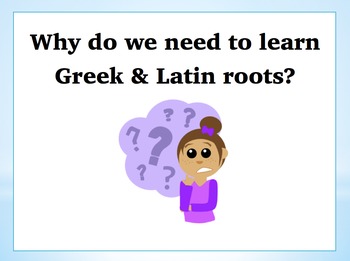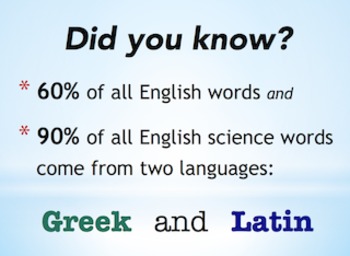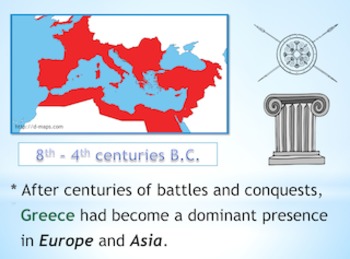Power Point: A History Lesson on Greek & Latin Roots in the English Language
- PDF
What educators are saying
Description
(NOTE: This product is also included in another product in my store titled: Weekly-Themed Greek & Latin Root Words for the Whole Year. Product includes Power Point presentations, tests, handouts, and certificates.)
The "Power Point: A History Lesson on Greek & Latin Roots in the English Language" is a 28-slide Power Point presentation that has been created to provide students with an overview / explanation as to why Greek and Latin root words are so prevalent in the Modern English language.
This presentation is meant as a general overview. It begins with an introduction to the Greek and Roman Empires and how their Greek and Latin root words eventually found their way into Middle English, Early Modern English, and Modern English.
Colorful clipart and animation make this an entertaining presentation for students to view prior to learning actual Greek and Latin root words.
(Power Point is a PDF file)
(Clip art from free on-line sources:)
www.openclipart.org and http://d-maps.com
Shakespeare clipart from:
www.teacherspayteachers.com/Store/Classroom-Core





